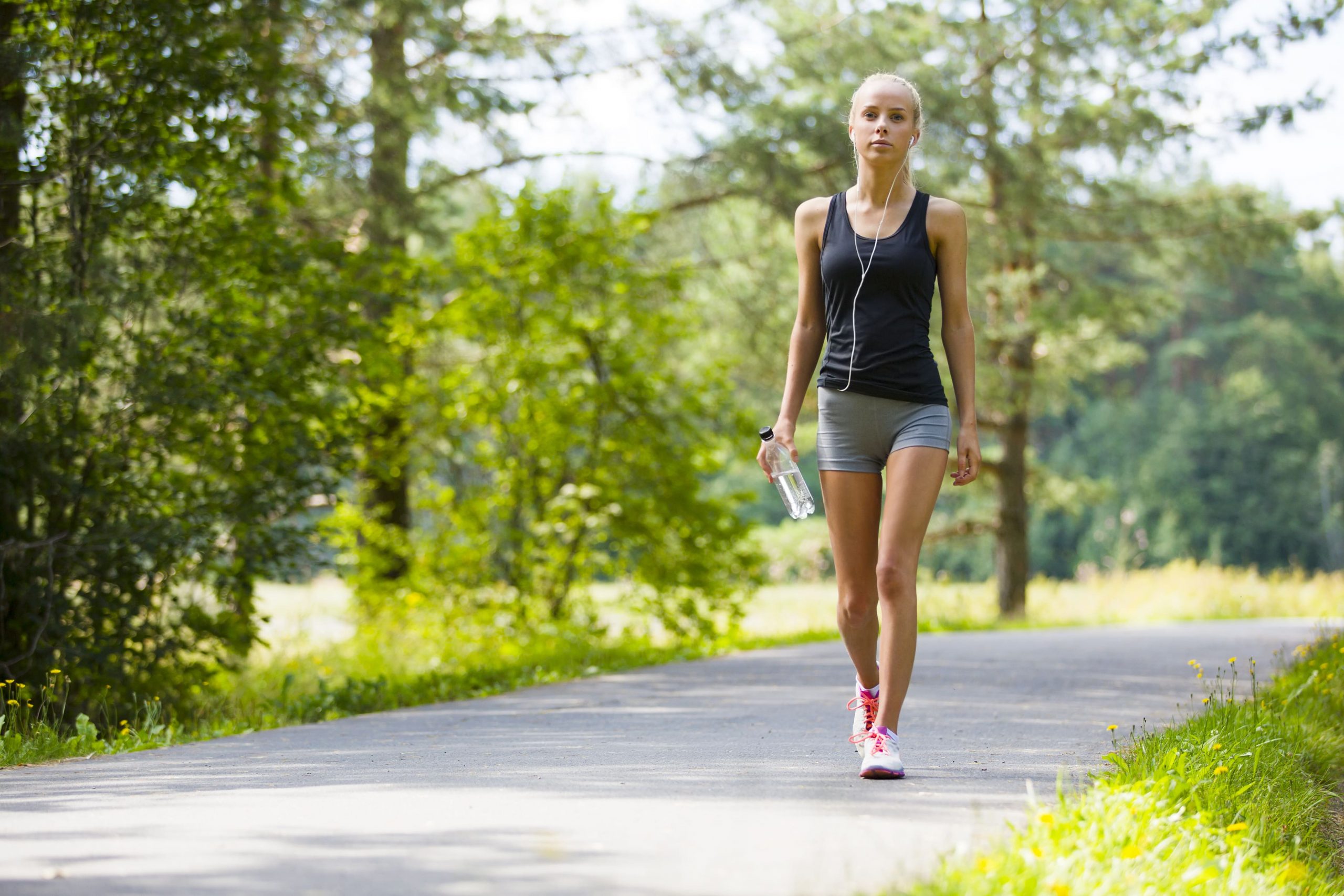Walking aids in weight loss and its maintenance since it helps burning excessive calories.
By adding 30 minutes of brisk walking to your routine, you may burn an extra 150 calories every day. The more calories you burn, the longer and quicker you walk. On the other hand, maintaining a sense of equilibrium is essential. Overdoing it can lead to muscle discomfort, damage, and exhaustion. Start with short walks or light-intensity walking if you’re new to regular exercise, and then gradually increase to longer walks or more moderate or high intensity.
Activities that increase the amount of fat burn during walking
While there are various things you can do to enhance the amount of body fat you burn when walking, raising your activity level has its benefits. These activities include the following:
- Wearing a heavy vest: Increasing weight to a workout burns more calories; for example, wearing a weighted vest while walking motivates your body to work harder. While wearing wrist weights or carrying weights in your hands can help you burn more calories, you should avoid doing so. Muscle imbalance or injuries are possible outcomes of both activities.
- Uphill walking: You should walk uphill regularly to assist you in burning more calories. Two to three times each week, attempt to walk up hills to increase the rate of calories burned.
- Increase the number of steps each day: When walking for weight loss, gradually increase the number of steps taken each day. Taking more steps than your typical daily step count can promote weight loss.
Tips to consider during walking for weight loss
- Check the weather: The last thing that can happen on your walk is to be trapped in a rainstorm. You should check the weather forecast first thing in the morning to determine when the best time to go for a walk is. If you usually go for a stroll about 4 p.m., but the weather forecast predicts rain, you may reschedule for midday.
- Hydrate: When you’re going for a lengthy stroll, make sure you’re well hydrated. Drink two cups of water at least 20-60 minutes before your stroll to flush it out of your system. When you get home from your walk, drink a glass of water to rehydrate your body. Avoid sugary sodas and electrolyte drinks; if you’re walking at a moderate pace, water will be fine to rehydrate the body.
- Invest in the appropriate gear: Get rid of your old flip-flops and replace them with an excellent pair of sneakers. The right gear can help you maintain good posture when walking and lower your chance of injury. Furthermore, wearing the appropriate sneakers might help you enhance your stride and make walking long distances more comfortable.
- Walk on an incline: When walking indoors, a treadmill allows you to adjust the inclination, which can help you burn more calories. If you’re outside, aim to stroll in a hilly region to get the most out of your walk. Raising the inclination can increase the workout’s intensity while lowering the stress on the legs and knees.
The Advantages of Walking
- Mental health promotion: In wellness and holistic health, taking good care of your mind and body is crucial. Walking every day can help you to improve your memory while also reducing symptoms of anxiety and depression.
- Combating obesity: When you are obese, you are at risk for various chronic conditions, including heart disease, diabetes, and even some malignancies. It’s critical to be active to combat obesity and maintain a healthy weight.
Walking safety recommendations
- Be Visible: It is recommended you wear proper attire when you go out. Bright colors are appropriate during; while luminous apparel to keep visible if you’re going out after dark or at dusk.
- Avoid distractions: Pedestrian fatalities are frequently caused by distractions. One of the most common sources of distraction is electronic devices. Walking or running while texting is not recommended. If you can’t wait to respond, step out of the way of other pedestrians and take a break until your messages are delivered.
- Walking in safe places: When walking, it is recommended to stay on the sidewalk always. If there isn’t a sidewalk accessible, make sure you walk on the road’s shoulder towards traffic. Facing the traffic increases your visibility to traffic.
Before you cross the street; Take a look and always keep an eye on the left, right, and left again. You should not rely exclusively on pedestrian signals; you should always look before crossing. If there isn’t a crosswalk accessible, look for a well-lit location on the road to cross and wait for a long gap in traffic to safely cross.
Warming up and cooling down after walking
Walking a little slow is the appropriate method to warm up. It would help if you begin each walk slowly to allow your muscles to activate and gradually increase the tempo. Stretch your leg muscles, especially your calves and front and back thighs, afterward.
You should perform stretches for 30 seconds at a time.
In case you experience any discomfort, stop stretching. If you bounce or jolt, you risk overstretching muscle tissue and causing microscopic rips, which can cause stiffness and pain in the muscles.
When doing physical activities, it’s essential to wear light clothes.
Overdressing might lead you to sweat more and raise your body temperature, making you uncomfortable throughout your stroll and possibly causing skin irritations. You will also avoid muscle stiffness and damage can with a progressive cool-down.
Conclusion
Walking every day can have several health advantages, including weight loss. It’s also one of the most straightforward and cost-effective ways to exercise. You will benefit from walking daily by being more active. You should consult your doctor or another healthcare expert before adding weight or increasing effort through pace or inclination. When walking, try to increase the frequency with which you walk as well as the number of kilometers or steps you do each day. You can include faster walks or higher inclines in a few days per week to add some intensity.
- Learn to Enjoy Self-care Routine - September 21, 2023
- Jonathan Aufray’s Story - July 29, 2023
- From Public Housing To Ivy League: The Inspiring Journey of Crystaltharrell.com and its Founder - June 7, 2023









